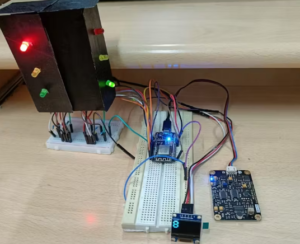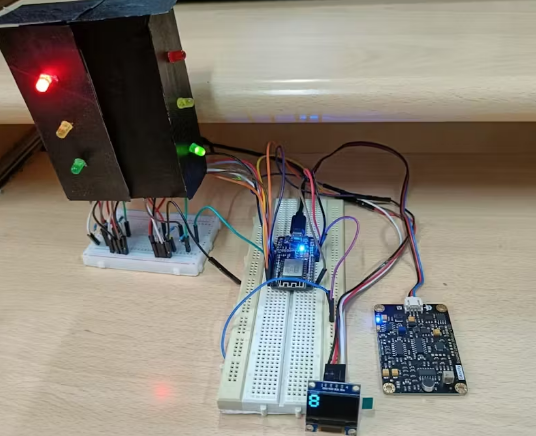Designing a Noise Pollution Monitoring Device for Cities
Creating a noise pollution monitoring device involves integrating sensors, data transmission modules, and analytics to measure, log, and analyze sound levels in urban environments. Such devices can help authorities identify noise hotspots, enforce regulations, and improve urban planning. Below is a structured guide to design and implement a noise pollution monitoring system.
1. Objectives and Goals
- Primary Purpose: Measure and monitor noise levels in real-time to assess and mitigate urban noise pollution.
- Key Features:
- Accurate measurement of sound levels (dB).
- Real-time data logging and transmission.
- Integration with a dashboard for analysis and visualization.
- Target Audience: Municipalities, urban planners, researchers, and environmental agencies.
2. Key Components of the System
A. Hardware
- Sound Level Sensor:
- Microphone: Electret or MEMS microphone capable of detecting sound in the human hearing range (20 Hz – 20 kHz).
- Pre-Amplifier: Boosts microphone output for better signal processing.
- Sound Level Meter Circuit: Converts sound signals into decibel (dB) values.
- Microcontroller or Microprocessor:
- Arduino: Suitable for basic systems.
- ESP32: Offers built-in Wi-Fi and Bluetooth for data transmission.
- Raspberry Pi: Ideal for advanced systems requiring complex computations.
- Communication Modules:
- Wi-Fi for urban areas with strong internet connectivity.
- GSM/4G modules for areas with cellular network coverage.
- LoRa (Long Range) for low-power, long-distance communication.
- Power Supply:
- Mains power with battery backup.
- Solar panels for off-grid installations.
- Enclosure:
- Weatherproof (IP65 or higher) to protect against environmental conditions like rain, dust, and heat.
B. Software
- Firmware:
- Controls the hardware components, processes sensor data, and manages data transmission.
- Cloud Integration:
- Platforms: AWS IoT, Google Cloud IoT, or Azure IoT.
- Database: Time-series databases (e.g., InfluxDB) for storing sound level data.
- Data Visualization Dashboard:
- Web-based or mobile app interface.
- Real-time graphs, historical data, and noise heatmaps.
- Analytics and Alerts:
- Trigger notifications or alarms when noise levels exceed permissible thresholds.
- Provide insights for regulatory compliance and urban planning.
3. System Architecture
- Sensors: Measure sound levels in dB.
- Processing Unit: Converts raw sound data into usable metrics.
- Communication Network: Transmits data to a cloud platform.
- Cloud Platform: Stores and analyzes data.
- User Interface: Displays data and insights.
4. Implementation Steps
A. Hardware Assembly
- Connect the sound level sensor to the microcontroller.
- Add a communication module for data transmission.
- Integrate a power supply and ensure backup options are in place.
- Mount the system inside a weatherproof enclosure.
B. Firmware Development
- Program the microcontroller to:
- Capture sound data from the sensor.
- Convert sound signals to decibel levels.
- Filter and preprocess data to remove noise artifacts.
- Transmit data to the cloud at regular intervals.
- Use libraries or frameworks for efficient data handling (e.g., Arduino IDE for basic setups).
C. Cloud Integration
- Set up a cloud platform to:
- Receive and store data from the device.
- Analyze sound levels and identify trends.
- Configure APIs for data visualization and alerts.
D. Dashboard Development
- Create a user-friendly interface with features like:
- Real-time noise level graphs.
- Historical data visualization.
- Noise heatmaps for urban analysis.
- Use frameworks like React or Angular for web dashboards and Flutter for mobile apps.
E. Deployment
- Identify strategic locations for device installation (e.g., busy intersections, residential areas, industrial zones).
- Test the device in the field to ensure accurate readings and reliable communication.
5. Key Design Considerations
- Accuracy: Use high-quality microphones and calibrate sensors to comply with standards like IEC 61672 for sound level meters.
- Connectivity: Ensure robust data transmission by selecting appropriate communication modules.
- Durability: Build devices to withstand extreme urban weather conditions.
- Power Efficiency: Optimize firmware for low power consumption.
6. Maintenance
- Periodically clean the microphone to avoid blockages or distortions.
- Check and replace power sources as needed.
- Update firmware for improved performance and security.
7. Scalability and Network Integration
- Deploy multiple devices across the city to create a noise monitoring network.
- Use edge computing to process data locally, reducing cloud dependency and latency.
- Integrate the system with smart city infrastructure for comprehensive urban management.
8. Cost Estimate
- Hardware Costs:
- Sound Level Sensor: $20–$100.
- Microcontroller: $5–$50.
- Communication Module: $10–$40.
- Enclosure: $20–$50.
- Power Supply: $30–$100.
- Software Costs:
- Cloud services: $10–$50 per month (based on usage).
- Dashboard development: One-time development cost or subscription.
9. Applications
- Regulatory Compliance: Monitor and enforce noise level regulations.
- Urban Planning: Identify noise hotspots and implement mitigation strategies.
- Public Awareness: Inform citizens about noise pollution levels in their vicinity.
- Health Studies: Analyze the impact of noise pollution on public health.
10. Example Use Case
- Scenario: Monitoring noise pollution near a busy intersection.
- Solution: Install devices with sound level sensors and GSM modules. Transmit data to a central server, where it is processed and displayed on a dashboard. Issue alerts if noise exceeds legal thresholds, enabling authorities to take corrective actions.
Would you like assistance with specific aspects such as sensor calibration, firmware development, or cloud integration for this system?

Also Read :
